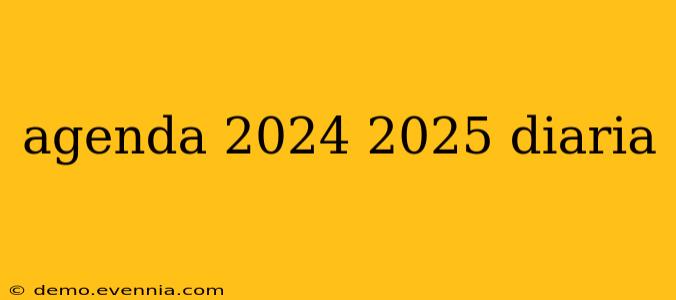Planning Your Days: The Ultimate Guide to Creating a 2024-2025 Daily Agenda
Successfully navigating the complexities of life requires effective planning. A well-structured daily agenda isn't just about ticking off tasks; it's about maximizing productivity, minimizing stress, and achieving your goals. This guide will walk you through creating a powerful daily agenda for 2024 and 2025, equipping you with the tools and techniques to make the most of each day.
Why a Daily Agenda is Essential
In today's fast-paced world, a daily agenda acts as your roadmap to success. It provides clarity, focus, and a sense of control. Benefits include:
- Increased Productivity: By prioritizing tasks and allocating specific time slots, you'll accomplish more in less time.
- Reduced Stress: Knowing what needs to be done and when eliminates the anxiety of forgotten deadlines and rushed work.
- Improved Time Management: A daily agenda helps you identify time-wasting activities and make better use of your hours.
- Goal Achievement: Breaking down larger goals into smaller, manageable daily tasks makes them seem less daunting and more achievable.
- Enhanced Organization: A clear overview of your daily schedule keeps you organized and prevents feeling overwhelmed.
Designing Your Ideal 2024-2025 Daily Agenda
Creating a truly effective agenda involves more than just listing tasks. Consider these elements:
1. Prioritization Techniques:
- Eisenhower Matrix (Urgent/Important): Categorize tasks based on urgency and importance to focus on high-impact activities.
- MoSCoW Method (Must have, Should have, Could have, Won't have): Prioritize tasks based on their necessity.
- Pareto Principle (80/20 Rule): Identify the 20% of tasks that yield 80% of the results and prioritize them.
2. Time Blocking:
Allocate specific time slots for particular tasks. Be realistic about how long tasks will take, and include buffer time for unexpected interruptions.
3. Integration with Technology:
Utilize digital calendars, task management apps (like Todoist, Asana, or Trello), or even simple note-taking apps to keep your agenda organized and accessible. Many offer features like reminders, collaboration tools, and integration with other platforms.
4. Flexibility and Review:
Life happens! Build flexibility into your daily agenda. Don't be afraid to adjust your schedule as needed. At the end of each day, review your progress, note what worked well, and identify areas for improvement.
Sample Daily Agenda Structure:
Here's a possible template you can adapt to your needs:
- Morning Routine: (Time blocked for exercise, breakfast, commute, etc.)
- Top 3 Priorities: (Most important tasks for the day, using chosen prioritization method)
- Scheduled Meetings/Appointments: (Include specific times and locations)
- Project Work: (Allocate time for specific projects, breaking them down into smaller tasks)
- Administrative Tasks: (Emails, calls, paperwork, etc.)
- Personal Time: (Schedule breaks, lunch, and personal appointments)
- Evening Routine: (Wind-down activities, planning for the next day)
Tips for Success:
- Start Small: Don't try to overhaul your entire schedule at once. Begin by incorporating a few key elements and gradually add more as you become comfortable.
- Be Realistic: Avoid over-scheduling yourself. Account for unexpected delays and build in buffer time.
- Review and Adjust: Regularly review your daily agenda and make adjustments as needed. What worked well? What could be improved?
- Stay Consistent: The key to success is consistency. Make using your daily agenda a habit.
By implementing these strategies and adapting them to your personal preferences and lifestyle, you can create a powerful daily agenda that propels you toward achieving your goals in 2024 and 2025. Remember, the perfect daily agenda is the one that works best for you.

